SIGHT SEEING (Outside Kathmandu Valley)
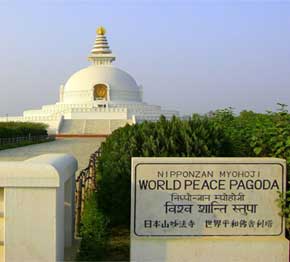
Lumbini
The birthplace of the Buddha, Lumbini is located some 250 km west of Kathmandu, in the plains of Kapilvastu. In the 6th Century B.C., during the time of the Buddha, a confederacy of Sakya clan people lived here. There are numerous buildings of religious significance in Lumbini, the most important of which is a massive stone pillar erected by the Mauryan Emperor Ashoka in 250 B.C.
It was discovered only in 1895 during excavations. Beside the Ashoka Pillar and the Maya Devi Temple, plinths of huge temples and a pond, where the new-born infant and his mother bathed, have been unearthed. Many monasteries and libraries have been constructed by nations from around the world in Lumbini.
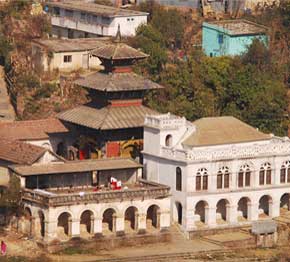
Chobar
- Legend has it that Kathmandu valley was once a massive lake, until the deity Manjushri cut a path through the rock at Chobar with his sword, thus releasing the waters from the valley. This gorge is located south-west of the city and the waters of the Bagmati River can be seen flowing through Chobar gorge and out of the valley.
The Jal Binayak temple is located by the river and is one of the four Binayak temples around the valley. It is dedicated to Lord Ganesh, who is revered as the God who removes obstacles.
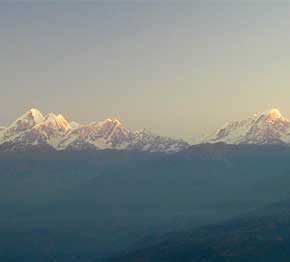
Nagarkot
Nagarkot has gained immense popularity for its awe inspiring sunrise and sunset views. Only 30 km east of Kathmandu at an altitude of 2,175m, this little town enjoys cool mountain breezes and one of the best panoramic views of the Himalaya, stretching from Dhaulagiri in the west all the way past Everest to Kanchenjunga in the east. This incredible view is the prime attraction that brings hordes of visitors to Nagarkot.
An easy 4-hour walk from Nagarkot through the local villages and rice fields takes us to one of the oldest temples in the valley, Changu Narayan
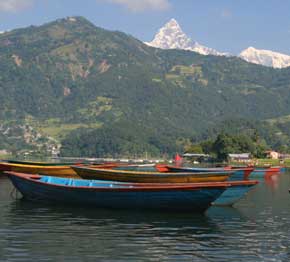
Pokhara
The lake district of Pokhara is indeed one of the most beautiful locations in Nepal. A must visit for tourists, the enchanting valley has numerous lakes with spectacular views of the Annapurna range as a backdrop. The tourist district is beside the Phewa Lake which is popular for boating and is ideal for relaxing especially after a trek.
Pokhara is ideally located for activities such as treks in the Annapurna region, rafting, paragliding, bird watching, micro-light flights and mountain biking. Around Pokhara, some of the places of interest are the three lakes, Phewa, Bagnas and Rupa, the Mountain Museum, Barahi Temple, Mahendra Gupha, Devi's Fall, Peace Pogoda and the old Pokhara Bazaar. The locals in this district are predominantly Gurung and Magar people. Warmer than Kathmandu, Pokhara is pleasant during the winter months and the best time to visit is between October and April.
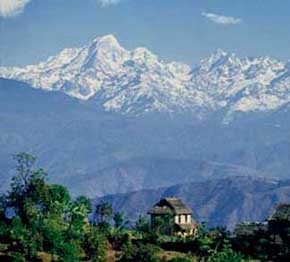
Dhulikhel
The small quiet town of Dhulikhel, known for traditional Newari crafts, lies 30 km east of Kathmandu at an altitude of 1,470 m. Climb a little to see the mountains, from Cho Oyu in the east to Himalchuli in the west. This town is popular for its great mountain views and typical Newari culture.
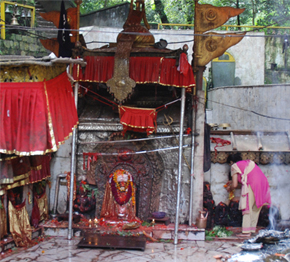
Dakshinkali
The famous Dakshinkali temple lies at the southern edge of the valley, hidden among the hills and sits at the confluence of two rivers. The temple is dedicated to the goddess Kali, Shiva's consort in her most bloodthirsty incarnation and hence a large amount of sacrifices are carried out here by devotees twice a week (Tuesdays and Saturdays) and on special festive occasions.The most number of sacrifices are seen during the long Dashain celebrations in September or October when large crowds of Hindus make sacrifices. It is also a popular destination for picnics on weekends which results in overcrowding on Saturdays.